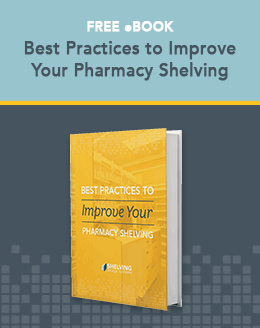 If you're an independent pharmacist who pays attention to the latest buzz on business management, chances are you've heard a bit on the topic of optimizing pharmacy workflow. Perhaps you've looked into the idea a bit, and have even identified a few problems with the way work gets done in your pharmacy, but you aren't really sure that changing them is worth the time, effort and money you'll have to put in to reorganize things. Just how much difference would it really make in terms of your bottom line? To help you answer that question, here are 10 ways that an inefficient pharmacy workflow may be hammering your profitability.
If you're an independent pharmacist who pays attention to the latest buzz on business management, chances are you've heard a bit on the topic of optimizing pharmacy workflow. Perhaps you've looked into the idea a bit, and have even identified a few problems with the way work gets done in your pharmacy, but you aren't really sure that changing them is worth the time, effort and money you'll have to put in to reorganize things. Just how much difference would it really make in terms of your bottom line? To help you answer that question, here are 10 ways that an inefficient pharmacy workflow may be hammering your profitability.
- Limiting your production potential – An inefficiency here and there that adds a few minutes to the time it takes to fill each prescription can take a toll on productivity. While an extra two or three minutes may not seem like much, if you're losing that much time in each step of the dispensing process of all or most prescriptions, it can add up to a substantial dent in the number you get done by the end of the day.
- Increasing workplace stress levels – Inefficiencies in the pharmacy workflow process makes it harder to get things done – especially on busy days – which leads to stress and frustration for you, your employees and your customers.
- Impacting employee satisfaction – An inefficient workflow can create tension and conflict between employees, especially if the roles and responsibilities of each are not clearly defined.
- Reducing employee retention – Stress in the workplace or tension between employees increases employee turnover, and given the costs associated with hiring and training new employees, that can certainly hurt your bottom line.
- Increasing risk of dispensing errors – A poorly organized pharmacy workflow system can compromise safety, making dispensing errors more likely.
- Increasing customer wait times – If getting things done behind the counter takes longer than it should, your customers will wait longer for service.
- Limiting your interaction with customers – More time spent on dispensing and other back-room tasks means less time to spend providing your customers with the counseling, advice and services they need.
- Limiting your range of services – Workplace inefficiencies can limit the number of services you are able to offer, placing you at a competitive disadvantage.
- Impacting customer loyalty – Long wait times, fewer services, and employees that are always stressed and in a hurry during customer service do not inspire customer loyalty.
- Affecting the general atmosphere & customer experience – The main factor for many customers in choosing a small, independent pharmacy over those big box types is atmosphere. They enjoy the more personalized service they receive in a smaller pharmacy, the ability to form good working relationships with friendly, professional employees who remember their names. Creating that sort of customer experience is essential to maximizing profitability, and is much more easily done when your business is smooth, efficient and well-organized.
Of course, there are many other ways that an inefficient pharmacy workflow may be hammering your profitability, but the point is that each small inefficiency will cost you. Whether you lose a customer this week due to a dispensing mistake or a long wait at the counter, an employee next week due to workplace stress, or find one of your best selling product out of stock the week after due to inefficient inventory management, each little loss adds up. So, yes, those small issues you've noted really can make a difference, and spending your time, energy and money to fix them is definitely worthwhile investment in your business.




